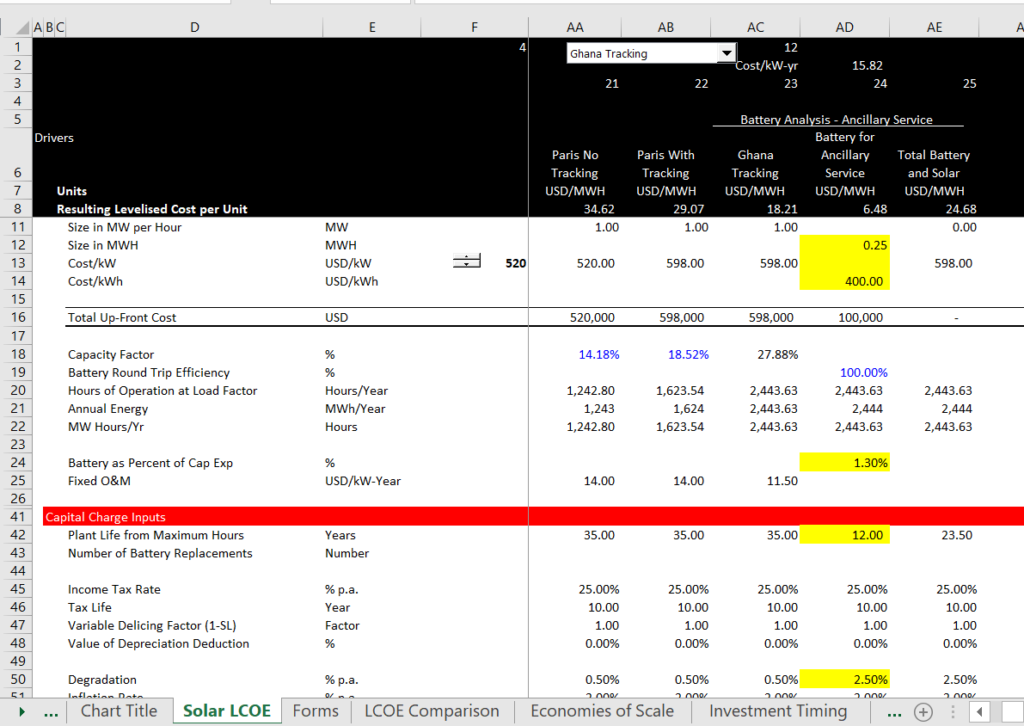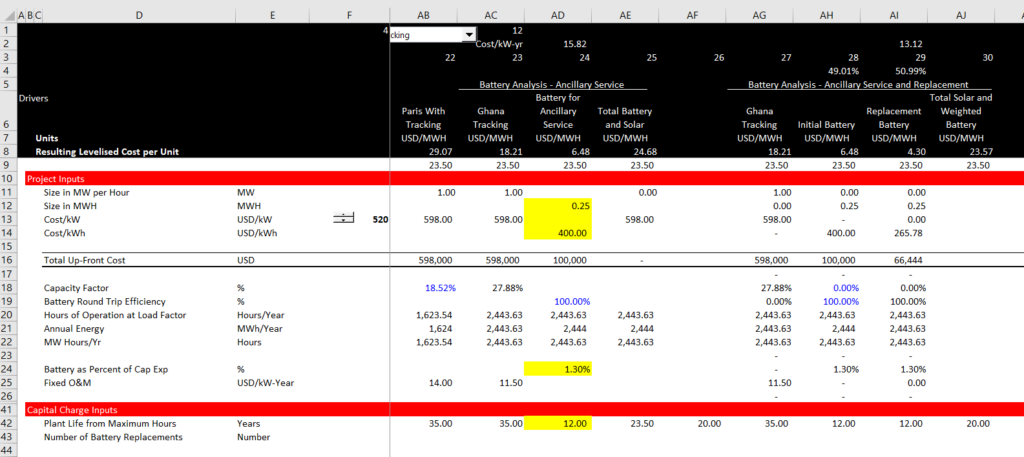The issue of the cost of ancillary services associated with renewable energy are addressed on this page. I measure the cost of adding a battery to a solar or wind project. I try to discuss ancillary services such as spinning reserve in terms that are not too technical. Ancillary services may be a big costs that really make a difference to the overall cost of renewable energy or they may be not very important because the ancillary services are a by-product of normal dispatch. Batteries and hydro can provide ancillary services and an issue is whether installation of batteries provides more benefits than costs.
Background on Ancillary Services
I am not an engineer and I do not claim to be an expert in this subject. But maybe this helps as the subject of ancillary services can quickly get very mysterious. The primary thing about ancillary services is that they are associated with short time periods and uncertainty in demand and supply. In the old days, if you had a few coal plants that could trip off (i.e. suddenly turn off), you may need another coal plant as back up. A thing that is a little confusing about ancillary services is to think about whether a battery can really provide more than one service at the same time without artificial markets. To introduce ancillary services I show the cost of a battery that has storage of only 15 minutes next to the cost of a solar project. If this battery is required to address the ancillary services, the cost of the battery adds more than USD 6 per MWH. I also show the cost of the ancillary service per kW-year which is often used as the pricing mechanism as the battery must be a stand-by insurance type project even if it is never used.

The way you can think about ancillary services has been explained to me by a good engineer in Malaysia named Adzhari. If a 1,000 MW coal plant suddenly has a forced outage meaning it is out of service, a couple of things can happen. If other plants such as natural gas plants cannot ramp up fast enough, the frequency in hertz will decline and if the frequency goes low enough, the whole system will fail. If the system is large, 1000 MW may reduce frequency for a while but this will not be enough to cause an outage.
If there is a hydro it can be running as a motor meaning it is spinning. There can be a circuit that automatically changes the hydro from running as a motor to running as a generator. If there is enough hydro on the system to cover the 1,000 MW plant that goes out, the 1,000 plant suddenly going can be easily covered. Depending on the level of demand, this 1,000 MW could be covered even without the hydro plant and in a couple of minutes if there is enough spinning reserve from gas plants, the plant outage would just reduce frequency a bit.
The screenshot below illustrates the ancillary service required or the required price when there is learning and the cost of the battery per kWh is reduced from USD 400 per kWh to USD 265 per kWh.

Ancillary Service and Wind Power Changes
If there is a small amount of wind on the system or if there are a lot of hydro resources, the cost of ancillary services may not be very much. Think about a sudden increase or decrease in the wind speed. If the wind speed change can be predicted, then the dispatcher can adjust the capacity of natural gas plants to meet the change in the wind plants. In this case there is probably no or little cost that should be attributed to the wind farms.